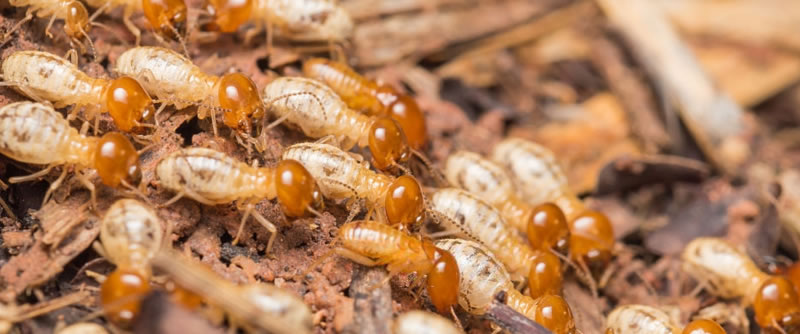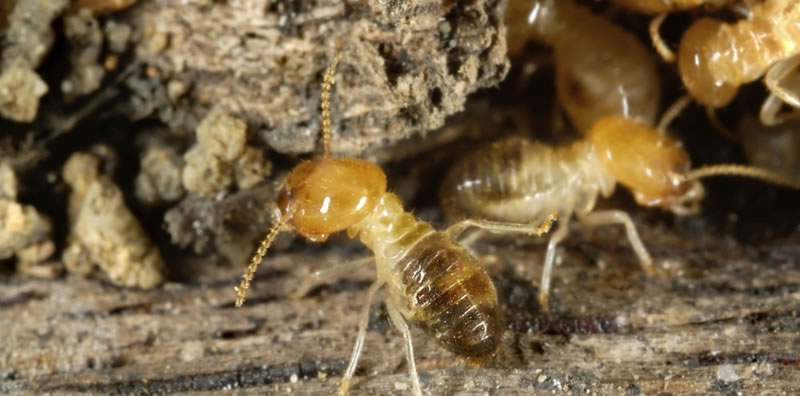What Are Termites
Brief Overview of The Termite
Termites are one of your worst nightmares as a homeowner. Sneaky and destructive, they often go unnoticed until they have caused copious damage to a building. How much do you know about these pests?
What exactly are termites?
Termites are a type of social insect. Like ants or bees, they live in colonies. They are detritivores, which means that they eat dead and decaying matter. There are over 3,000 distinct species of termite spread out across six continents. Many species are a nuisance; they are known for invading human spaces and destroying wooden structures.
Appearance
Termites are often said to resemble ants. In fact, they are often referred to as “white ants.” However, they are actually not related to ants, and there are some clear differences between the two types of insects. If you look closely at a termite, you will see that its body is soft, and the segmentation between its thorax and abdomen is not as distinct as that of an ant. Termites can be varying shades of white or brown. They tend to be about a quarter of an inch to half an inch long. Termite queens and kings can be bigger than that. Some termites, known as alates, have wings.
Biology
Though termites resemble ants and live in colonies, they are genetically more closely related to cockroaches. Like cockroaches, termites eat each other’s feces. This helps termites digest wood. Actually, termites cannot digest wood on their own. They have symbiotic protozoa inside their digestive tracts, and these protozoa secrete enzymes that break down cellulose. Cellulose is a type of sugar found in plants. Most organisms on Earth cannot digest it, but termites can — all thanks to microscopic organisms they obtain by eating their neighbors’ poop.
Life Cycle
Termites, like most insects, start out as eggs. After hatching, termites go through several life stages. They start off as nymphs, which are young termites. To enter into the next stage of life, a nymph molts. Different termite species have different numbers of molts. Termites can live for a very long time. Queens have been known to live as long as 50 years!
Habitat
Termites can live in one of three different habitats: subterranean, dampwood and drywood. The type of habitat depends on the termite species.
- Subterranean termites live underground. They build networks of tunnels in the dirt and prefer wet, muddy areas. Subterranean termites tend to be more destructive to buildings because they are harder to notice.
- Dampwood termites live in wet wood. They are commonly found inside fallen logs. They are less likely to invade homes, but they can be a problem if you have any wet and decaying wood in your yard.
- Drywood termites prefer wood that is hard and not decaying. They can cause a lot of damage to homes because they build their tunnels inside the wooden frames of houses. Sometimes, people find them inside wooden furniture or up in the attic.
Termite Species in Australia
Of the approximately 3,000 species of termites in the world, about 360 live in Australia. However, most of these are not destructive. There are only a handful of Australian termite species that commonly invade and damage buildings. Here are some common ones:
Coptotermes acinaciformis
This is a subterranean termite. Known for being more destructive than any other termite species in Australia. Not only does it cause structural damage but can also cause fires from chewing through wires.
Mastotermes darwiniensis
Also known as the giant northern termite. Known for destroying more than just wood and timber. It can also chew through everything from paper to leather to concrete.
Cryptotermes brevis
Also known as the West Indian drywood termite, this is an invasive species that originated in South America. These termites now live all across the eastern coast of Australia, where they overrun native termite populations. The Australian Biosecurity Act 2014 attempts to control the Cryptotermes population by allowing officials to inspect and destroy wood that has been invaded.
Finally
Termites are clearly nothing to mess around with. Remember to invest in regular inspections to keep your property protected. With any luck, those encounters will be minimal!



